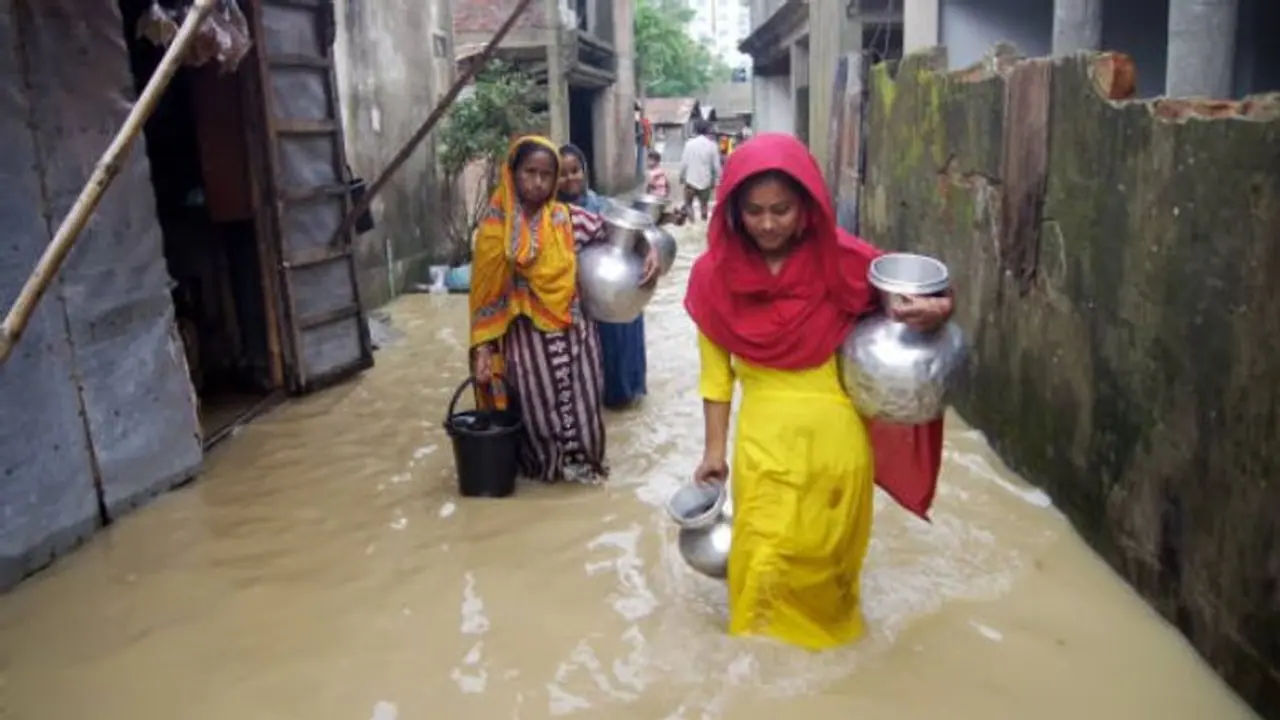India has rejected Bangladesh's claim that the floods in Cumilla, Brahmanbaria, and Feni were caused by the opening of the Dumbur dam in Tripura, calling it "factually not correct." Heavy rains in catchment areas and rising river levels are the primary causes of the flooding.
New Delhi: India on Thursday rejected the allegation that the floods in Bangladesh were caused due to the gates opening of the Dambur hydroelectric project in Tripura and termed it as “factually not correct.”

In recent days, Bangladesh has witnessed heavy rainfalls which have led to the inundation of the bordering districts of Cumilla, Brahmanbaria, and Feni.
Terming the allegation as “factually not correct”, the Ministry of External Affairs issued a statement, stating: “We have seen concerns being expressed in Bangladesh that the current situation of flood in districts on the eastern borders of Bangladesh has been caused by the opening of the Dumbur dam upstream of the Gumti River in Tripura. This is factually not correct.”
The ministry cited the reasons for the floods in the neighbouring country to the catchment areas of Gumti river that flows through India and Bangladesh. It has “witnessed heaviest rains of this year over the last few days.”
“The flood in Bangladesh is primarily due to waters from these large catchments downstream of the dam.”
It further stated that the Dumbur dam is located quite far from the border -- over 120 Km upstream of Bangladesh. “It is a low height (about 30m) dam that generates power that feeds into a grid and from which Bangladesh also draws 40MW power from Tripura.”
Along the about 120 Km river course “we have three water level observation sites at Amarpur, Sonamura and Sonamura 2.”
Since August 21, Tripura and adjoining districts of Bangladesh have been witnessing heavy rainfall and in the event of it, automatic releases of water have been observed.
It must be noted that New Delhi has been transmitting real-time flood data to Dhaka since the Amarpur station is part of a bilateral protocol.
“Data showing a rising trend has been supplied to Bangladesh up to 1500 hours on 21 August 2024. At 1800 hours, due to flooding, there was a power outage leading to problems in communication. Still, we have tried to maintain communication through other means created for urgent transmission of data.”
“Floods on the common rivers between India and Bangladesh are a shared problem inflicting sufferings to people on both sides and requires close cooperation towards resolving them.”
The two countries share 54 common cross-border rivers and river water cooperation is an important part of the bilateral engagement. “We remain committed to resolving issues and mutual concerns in water resources and river water management through bilateral consultations and technical discussions.”
Due to continuous rainfall and rising levels of rivers, the flood situation in southeastern Bangladesh has deteriorated. It led to over 1.5 million people stranded. The roads and highways connecting the region have been completely submerged in floodwaters.
